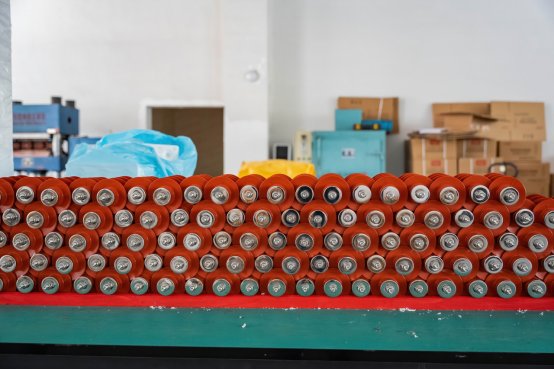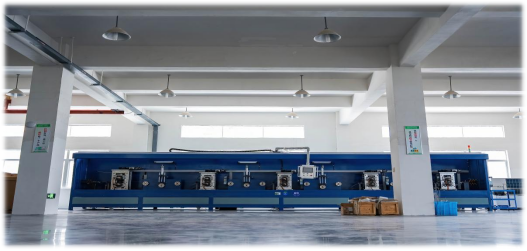
As the electrical manager of a photovoltaic power station, I still can't forget that thunderstorm season - the power station tripped multiple times without reason, resulting in a loss of hundreds of thousands of kilowatt hours of electricity. After thorough investigation, the root cause was found to be a batch of "civilian grade" Lightning Arresters with a nominal voltage of 35kV but actually designed according to distribution line standards. They cannot withstand the special working conditions of photovoltaic power plants and have repeatedly failed to operate under overvoltage, resulting in the tripping of station transformer protection.
Why are the requirements for lightning arresters in photovoltaic power plants more stringent?
Photovoltaic power plants are not ordinary distribution lines, and they have more stringent requirements for lightning arresters, mainly reflected in:
1. Different grounding methods for the system: Most 35kV photovoltaic collection lines use a small resistance grounding system. When grounded single-phase, the non fault phase voltage rises to the line voltage (35kV) for a long period of time (10-30 seconds). This requires lightning arresters to have higher continuous operating voltage (UC) and rated voltage (Ur).
2. Frequent overvoltage operation: The switching of box type transformers, the operation of reactive power compensation devices, and changes in DC components can all generate frequent overvoltage surges, which require extremely high current capacity and energy absorption capacity of lightning arresters.
3. Poor operating environment: Located in an open area, the risk of lightning strikes is higher; The large temperature difference between day and night can easily lead to seal failure and internal moisture.
Differences in core parameters between "civilian version" and "power station version" lightning arresters

The following are the details of the proportion of disaster areas that we have stepped on:
Parameters | "Civilian Version" (Distribution Level) | "Power Station Version" (Power Station Type) | Traps |
Rated voltage (Ur) | 51kV | 54kV | The product with Ur=51kV was selected. When the system is single-phase grounded, the lightning arrester withstands the 35kV line voltage for too long, resulting in thermal collapse. |
Continuous operating voltage (Uc) | 40.8kV | 42kV | Uc is low. Under long-term line voltage operation, valve aging accelerates and leakage current increases. |
Square wave current carrying capacity | 100A, 20 times | 400A-600A, 20 times | Insufficient current carrying capacity. Under overvoltage impact caused by cutting off the no-load transformer and other operations, the valve plate was burned, lost its protection function, and directly grounded, resulting in tripping. |
Pressure release level | 5kA (symmetrical) | 20kA/40kA (symmetrical) | When the lightning arrester fails, it cannot be effectively disconnected, which may cause an explosion and expand the scope of the accident. |
External insulation creepage distance | ≤ 810mm | ≥ 1050mm (Class IV pollution) | Due to severe dust in the photovoltaic field area, insufficient creepage distance leads to surface flashover and formation of grounding faults. |
>Note: "Civilian version" is a common industry term referring to products that only meet the basic requirements of distribution lines, rather than the special working conditions of power stations.
Accident Review: The Technical Truth Behind the Trip
1. First trip (thunderstorm day):
-Phenomenon: The zero sequence overcurrent protection of the 35kV I-section busbar is activated, causing the station transformer to trip.
-Truth: After the lightning current surge, the A-phase lightning arrester had insufficient square wave current carrying capacity, resulting in partial breakdown of the valve plate but incomplete short circuit. The huge leakage current causes severe heating and continuous deterioration of insulation performance.
2. Second trip (sunny operation):
-Phenomenon: After the operation and maintenance personnel remotely closed the switch box, it tripped again.
-Truth: The operating overvoltage generated by closing the no-load transformer becomes the "last straw that crushes the camel". The lightning arrester of this phase is completely broken down, forming a permanent single-phase grounding fault, and the protection is tripped correctly.
3. On site dissection:
-After removing the faulty lightning arrester, it was found that there were obvious burn marks inside the epoxy sleeve, the valve plate was broken, and the tester showed extremely high residual voltage, indicating complete failure.
The golden rule for selecting lightning arresters for photovoltaic power plants
The lessons learned with blood can be summarized as follows:
1. Priority given to rated voltage (Ur):
-For a 35kV low resistance grounding system, Ur must be selected to be ≥ 54kV.
-Calculation formula: Ur ≥ 1.25~1.3 x maximum operating line voltage of the system.
2. Flow capacity is the core:
-The square wave current capacity must be selected as 400A or above (at least 2000 μ s square wave, 20 times).
-The high current impulse withstand (4/10 μ s) needs to reach 100kA or above.

3. Certification and standards are the bottom line:
-It is necessary to have type test reports from national level testing institutions (such as Xigao Institute and Wugao Institute).
-The report must include all special test items of the Power station type lightning arrester, especially the long-term discharge test.
4. Auxiliary judgment of appearance and structure:
-Creepage distance: Carefully check the creepage distance on the nameplate. For Class IV polluted areas, 35kV products must be ≥ 1050mm.
-Pressure release plate: Check for obvious pressure release devices (such as metal clamps, release ports), which are the hallmark of power station products.
Action List for Procurement and Operations Personnel
-If you are a purchaser:
1. Clearly state in the bidding technical specifications: "Power plant type Zinc oxide lightning arrester".
2. Require the supplier to provide the original type test report and focus on verifying key parameters such as Ur, Uc, and square wave current.
3. Reject any bidding proposal below 54kV Ur and 400A square wave.
-If you are an operations engineer:
1. Immediately verify the nameplate parameters of the 35kV lightning arrester in the station, with a focus on Ur and Uc.
2. Regularly use an infrared thermal imager to detect the temperature of the lightning arrester body. Abnormal heating is a precursor to failure.
3. After the thunderstorm season, it is necessary to record the number of actions of the lightning arrester discharge counter and conduct focused inspections on the lightning arresters that have been activated.
---
Final warning:
Lightning arrester is the "last line of defense" of the power grid, and its cost is less than one ten thousandth of the loss caused by a single trip. Pursuing cost-effectiveness on critical equipment often results in paying the most expensive price in the end. For photovoltaic power plants, "power station type" is not a choice, but an iron rule.
Oil&Gas exploited
Automotive Manufacturing
Transportation & Dlistrlbutlon
Manufacture
Industrial Construction
Green Energy
Copyright ? 2024 All Rights Reserved
Back to top 
Comment
(0)